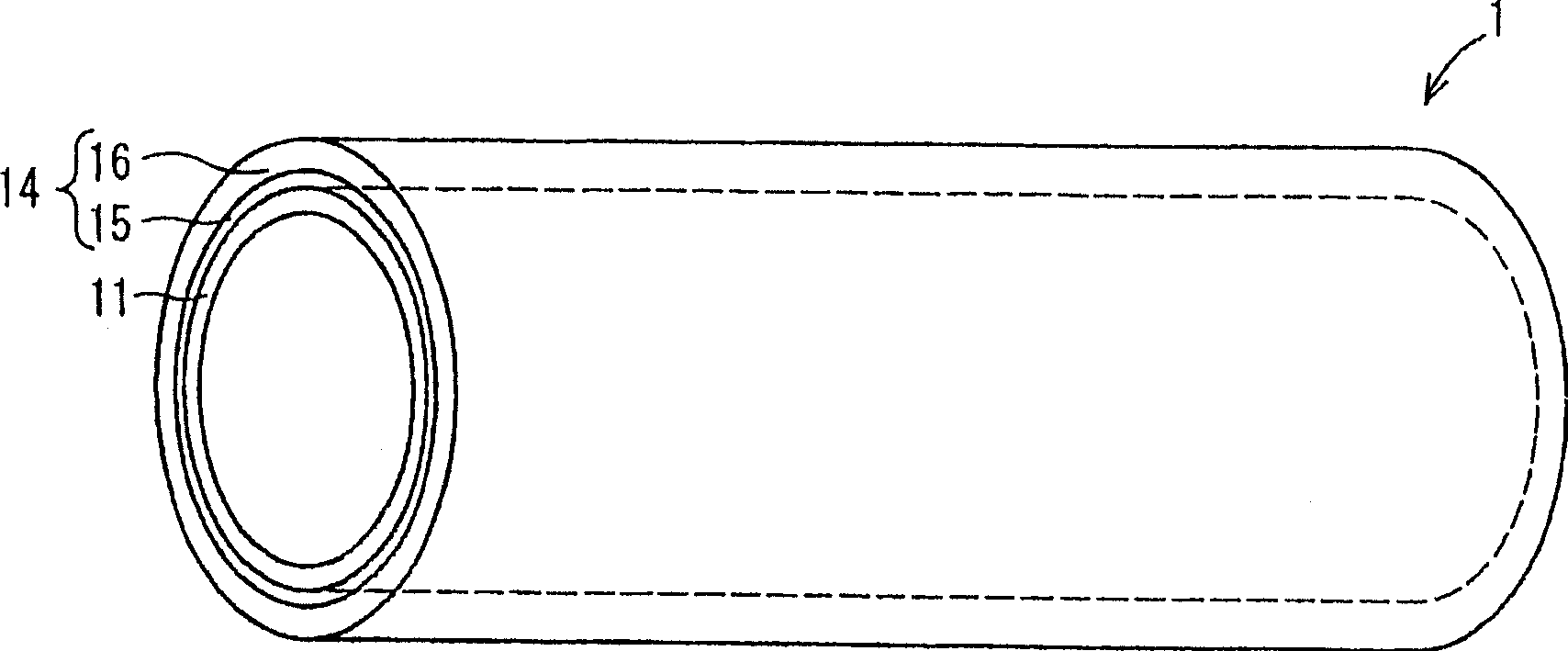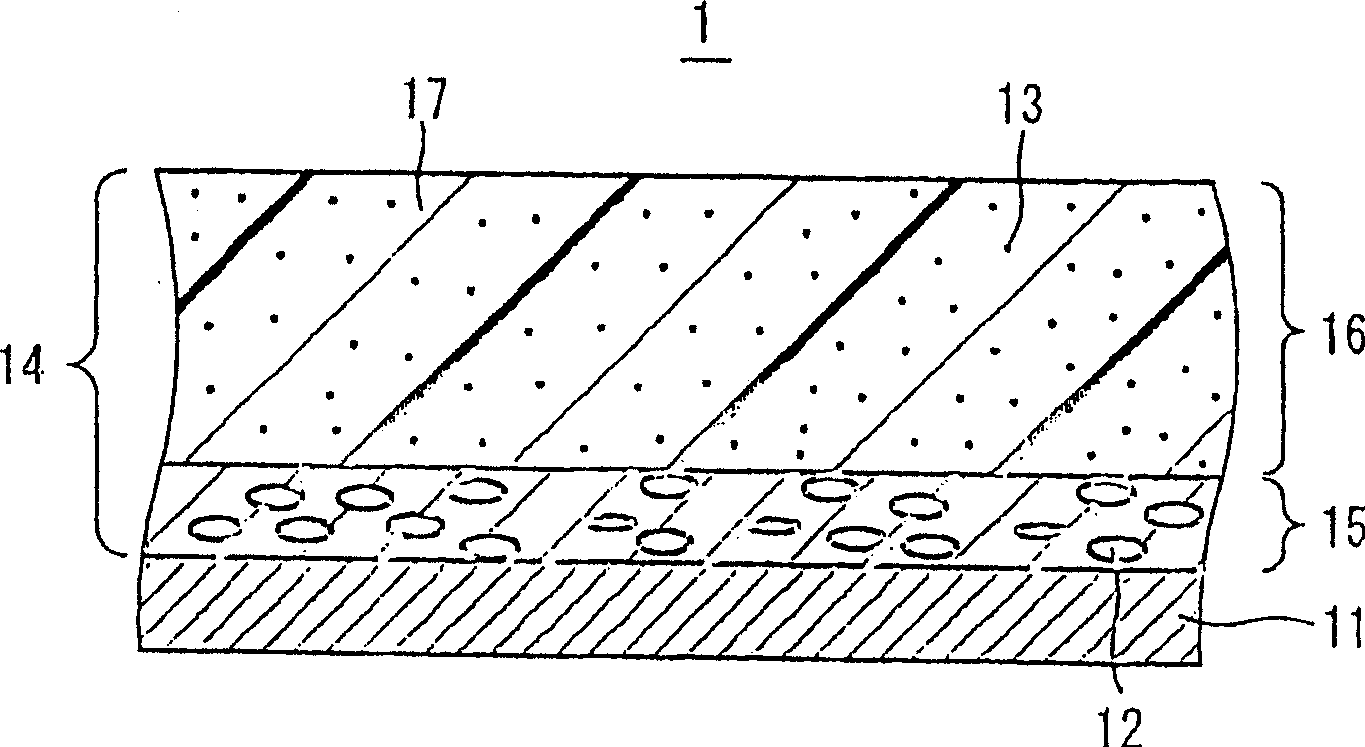Electrophotographic photoreceptor and image forming apparatus including the same
An electrophotographic and photoreceptor technology, applied in optics, electrographics, instruments, etc., can solve the problems of poor production efficiency, easy deterioration and wear of the surface of the photosensitive layer, and achieve excellent wear resistance, excellent mechanical strength, high The effect of charge mobility
- Summary
- Abstract
- Description
- Claims
- Application Information
AI Technical Summary
Problems solved by technology
Method used
Image
Examples
preparation example 1
[0393] (Preparation Example 1) Preparation of Exemplary Compound No.1
[0394] (Preparation example 1-1) the preparation of enamine intermediate
[0395] In 100ml of toluene, add 23.3g (1.0 equivalent) of the N-(p-tolyl)-α-naphthylamine shown in the following structural formula (9) and 20.6g (1.05 equivalent) of the diphenyl group shown in the following structural formula (10) Acetaldehyde and 0.23g (0.01 equivalent) DL-10-camphorsulfonic acid were heated to make the by-product water and toluene azeotropic, discharged from the system, and the reaction was carried out for 6 hours. After the reaction was completed, the reaction solution was concentrated to about 1 / 10, and slowly added dropwise to 100 ml of hexane that was vigorously stirred to form crystals. The resulting crystals were filtered off and washed with cold ethanol to obtain 36.2 g of a pale yellow toner powder.
[0396]
[0397]
[0398] The obtained compound was analyzed by liquid chromatography-mass spectr...
preparation example 1-2
[0401] (Preparation example 1-2) the preparation of enamine-aldehyde intermediate
[0402] In 100 ml of anhydrous N,N-dimethylformamide (DMF), slowly add 9.2 g (1.2 equivalents) of phosphorus oxychloride under ice cooling, and stir for about 30 minutes to prepare the Wells-Meyer reagent. Under ice cooling, 20.6 g (1.0 equivalent) of the enamine intermediate represented by the aforementioned structural formula (11) prepared in Preparation Example 1-1 was slowly added to the solution. Then, it was heated slowly to raise the reaction temperature to 80° C. and kept at 80° C. with heating and stirring for 3 hours. After the reaction, the reaction solution was left to cool, and slowly added to 800 ml of cooled 4N aqueous sodium hydroxide solution to form a precipitate. The formed precipitate was filtered off, washed sufficiently with water, and then recrystallized from a mixed solvent of ethanol and ethyl acetate to obtain 20.4 g of a yellow toner powder.
[0403] The obtained com...
preparation example 3
[0419] (Preparation Example 3) Preparation of Exemplary Compound No.46
[0420] 2.0g (1.0 equivalents) of the enamine-aldehyde intermediate shown in the aforementioned structural formula (12) obtained in Preparation 1-2 and 1.53g (1.2 equivalents) of the Wittig reagent shown in the following structural formula (14) were dissolved in 15ml After slowly adding 0.71 g (1.25 equivalents) of potassium tert-butoxide to the solution in anhydrous DMF at room temperature, the solution was heated to 50° C. and stirred for 5 hours while maintaining and heating at 50° C. After the reaction mixture was allowed to cool, it was poured into excess methanol. The precipitate was collected and dissolved in toluene to prepare a toluene solution. The toluene solution was transferred to a separatory funnel, washed with water, and the organic layer was taken out, and the taken organic layer was dried over magnesium sulfate. After drying, the organic layer from which the solid matter was removed was...
PUM
 Login to View More
Login to View More Abstract
Description
Claims
Application Information
 Login to View More
Login to View More - R&D
- Intellectual Property
- Life Sciences
- Materials
- Tech Scout
- Unparalleled Data Quality
- Higher Quality Content
- 60% Fewer Hallucinations
Browse by: Latest US Patents, China's latest patents, Technical Efficacy Thesaurus, Application Domain, Technology Topic, Popular Technical Reports.
© 2025 PatSnap. All rights reserved.Legal|Privacy policy|Modern Slavery Act Transparency Statement|Sitemap|About US| Contact US: help@patsnap.com



